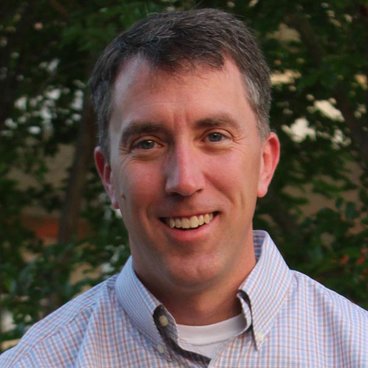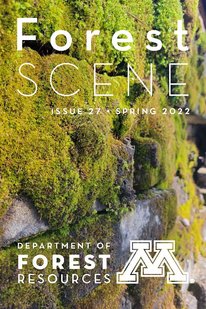
Dr. Chris Edgar calls himself a forest biometrician. He began studying forest modeling in graduate school, and that has remained his focus through his professional career. Chris grew up in the American South and went to college at North Carolina State University before earning his Ph.D. here at the University of Minnesota.
“I’m a little different than the other faculty, in the sense that my position is split more-or-less evenly between the department and the national forest inventory administered by the Forest Inventory and Analysis Program (FIA) for the USDA Forest Service’s Northern Research Station here in St. Paul. That’s a program I strongly believe in, and my research is primarily aimed at bringing value to that program.”
“I hope that universities can establish these kinds of partnerships where faculty are intimately involved in programs outside of the immediate department. I think it’s a good model. If we can show that this model is effective and sustainable, then it can be picked up by other universities.”
We can think of the national forest inventory as the nation’s tree census, even though technically it’s a sample rather than a census. It is the federal government’s approach to strategically measuring the forests of America consistently over time. “It’s the federal program that tries to count the trees, basically, and also how much carbon they’re storing and sequestering.”
The program has created and implemented a systematic method to measure changes in forests. That change is important in the context of invasive species like emerald ash borer; the impacts of climate change on tree species; and major disturbance events like hurricanes, wildfires, and wind events.
“The area that I really focus on is sampling design and estimation procedures, which is where my biometrics approach comes into play. I’m thinking about how we use this data, how we turn it into information, and perhaps how we develop tools to convey that information to stakeholders.”
Chris’s research is about using data to study two important areas: urban forest analysis and assessing large-scale disturbances. He didn’t expect to focus on urban forests, but his work at Texas A&M naturally led him there.
“The Texas A&M Forest Service was really excited about the Forest Inventory and Analysis program. They were really interested in getting an inventory of the trees. I was at the ground level of this program in 2014, and here I am 8 years later, and now a big part of my research is with the urban inventory and analysis program. We think of Texas as a big rural state, but it’s actually a very large urban state with many large cities. Houston and Austin were the first two cities in America to complete the program.”
In rural forests, Chris utilizes the national forest inventory data to assess forest changes that are the result of large-scale disturbances. “We had the worst one-year drought in Texas history in 2011, and we had a really large wildfire season—like four million acres burned. I was working for the state forestry agency, doing lots of analysis on how these large disturbance events affect our forests and economy, etc. That sparked my interest in using the national forest inventory as a dataset to see what’s happening with forests after major disturbances. That’s been a really active area of my research in the last 10 years, and that really got triggered when I was in Texas. ”
There is definitely a public need to understand how these disturbances are impacting our forests. Most people outside the forestry community don’t really understand what has happened during, before, and after a major event, and that’s what Chris’s work with the national forest inventory aims to support.
“I did a huge study during the Texas drought that got a lot of press, and I was doing a lot of interviews. A reporter asked, ‘So what’s going to happen to all of these dead trees. Are you all going to go out there and pick them up?’ And the answer is ‘Well, they’re going to stand there until a tropical storm comes through and blows them over and then they’re going to sit there and rot.’”
Looking ahead, Chris is excited about the innovations in technology and how that will impact forest inventories—especially the advances in computing power and geospatial data capture technology. He remains confident that foresters will still be doing what many of them love most: getting outside and looking at the forest themselves.
“One thing I know for certain is that wherever we go in the future, we’re still going to need people to go out in the woods and put a tape around a tree.
Chris cares about the sustainability of funding for higher education, especially the impacts it has on student debt. He’s pleased that it’s a major focus of the department to mitigate costs to students, which the department has addressed by incorporating the summer sessions into the tuition of the spring and fall semesters, traditional scholarships, and fundraising to cover the costs of equipment.
The Forest Scene newsletter is published biannually in the spring and fall, featuring stories and updates from the Department of Forest Resources. Readers can download issue 27 of Forest Scene as an interactive PDF that is fully tagged and compatible with most screen readers, or read the individual stories here in a web-based format.

